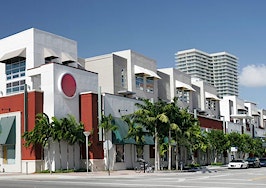RealtyTrac released today its Second Annual Manmade Environmental Hazards Housing Risk Report, which analyzed 7,751 ZIP codes throughout the nation and measured five environmental hazards: air quality, superfund sites, brownfields, former drug labs and polluters. RealtyTrac broke down the risk into five categories, ranging from very high to very low.
According to the report:
- More than one-third of all U.S. single family homes and condos, or 25 million, are in ZIP codes at high risk or very high risk for manmade environmental hazards.
- Home sales prices in ZIP codes with high risk are in 2015 are 15 percent lower compared to homes in ZIP codes with low risk
- Home prices in high-risk ZIP codes are 1.8 percent lower on average than 10 years ago, while home prices in low-risk ZIP codes are 5.3 percent higher
In Miami-Dade County, six ZIP codes, or 7 percent are at high or very high risk. In the past 10 years, the median home sales price decreased 18 percent.
Nearby Broward County has one ZIP code, or 2 percent, Palm Beach County has two ZIP codes, or 4 percent, and Collier County has no ZIP codes in high or very high risk.
“Buying a home in an area with low risk of manmade environmental hazards may not just be a good idea for health and safety reasons; it may also be good for financial reasons,” said Daren Blomquist, vice president at RealtyTrac, in a statement.
“Across the country, home prices in high risk zip codes were lower on average, and appreciation over the last 10 years slower when compared to home prices and 10-year appreciation in low risk zip codes.”
The 12 major markets with no ZIP codes at high risk for manmade environmental hazards include Albuquerque, N.M.; Anchorage, Ala.; Cape Coral-Fort Myers, Fla.; Charleston, S.C.; Myrtle Beach, S.C.; Naples, Fla.; Palm Bay, Fla., Port St. Lucie, Fla.; Provo-Orem, Utah; Salinas, Calif.; Santa Rosa, Calif.; and Winston-Salem, N.C.
The metro areas that saw the highest percentage of ZIP codes with a high risk include Riverside-San Bernardino, Calif.; Akron, Ohio; Cleveland; Stockton, Calif.; Louisville, Ky.; Reading, Pa.; Toledo, Ohio; El Paso, Texas; Los Angeles; Kansas City; Grand Rapids, Mich.; and Bakersfield, Calif.









